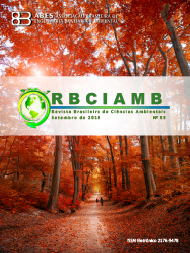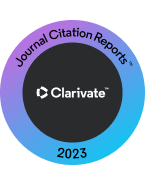MONITORING AND REMOVAL OF ANTI-INFLAMMATORY DRUGS IN SEWAGE TREATMENT PLANT WITH STABILIZATION POND
DOI:
https://doi.org/10.5327/Z2176-947820190502Keywords:
Effluent, Diclofenac, ChromatographyAbstract
The monitoring of residual drugs in the environment has been gaining
attention, as they are frequently detected in sewage treatment plants (STP)
and reach the water bodies. Therefore, the aim of this study was to evaluate
the presence, concentration and percentage of anti-inflammatory removal
in samples of raw sewage and treated effluent from the sewage treatment
plant of Dracena-SP. Two collection points were assessed at the STP named
P1 (raw sewage) and P2 (treated effluent). The collections and analyses were
performed from March 2017 to February 2018. The samples were prepared
by dispersive liquid-liquid microextraction and analyzed by high performance
liquid chromatography. The presence of the drugs diclofenac, ibuprofen and
naproxen was detected in the two analyzed points of the STP. Ibuprofen was
the compound with the highest concentration in raw sewage (95.92 μgL-1).
In winter months, the lowest concentrations of anti-inflammatory drugs in
the raw sewage and the lowest percentages of drug removal in the STP were
recorded. In July, ibuprofen and naproxen were not detected in P1 nor P2.
The presence of these drugs in raw sewage is attributed to the disposal of medicines in sinks and toilets, as well as excretion via faeces and urine with drug residues that are not fully absorbed
by the human body. The treatment of domestic sewage through stabilization ponds does not completely remove these
anti-inflammatories, providing the input of these substances in surface waters, altering their quality.
Downloads
Downloads
Published
How to Cite
Issue
Section
License
Copyright (c) 2019 Revista Brasileira de Ciências Ambientais

This work is licensed under a Creative Commons Attribution 4.0 International License.


























